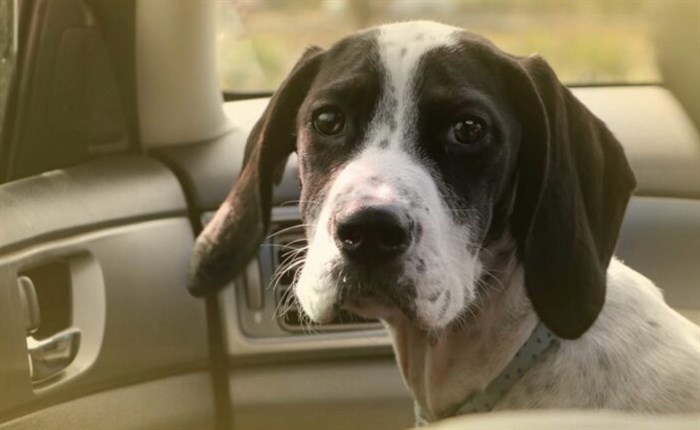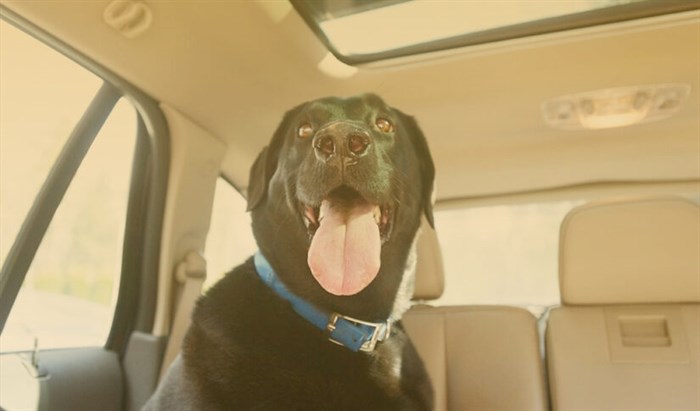
Image Credit: SUBMITTED/BCSPCA
June 26, 2021 - 2:42 PM
Every year the message is the same and every year it needs to be repeated: Do not leave your pet in your hot car.
With the mercury on the rise, and record-breaking temperatures expected by the weekend in B.C., the SPCA is trying to get that warning out once again.
Last year, the SPCA responded to more than 800 calls about animals in distress in hot cars.
“The temperature in a parked car, even in the shade with windows partially open, can rapidly reach a level that can seriously harm or even kill a pet,” Lorie Chortyk with the B.C. SPCA said in a June 22 media release.
Dogs don’t have sweat glands and can only cool themselves by panting and releasing heat through their paws.
“Dogs cannot withstand high temperatures for long periods, particularly older pets and brachycephalic breeds such as pugs, bulldogs, Boston terriers and others with compressed faces,” she said.
She calls it a completely preventable tragedy when a pet is found in critical distress or dead in a hot car.
If you plan to run some errands, leave your animals at home.
“If you will need to leave them in a parked vehicle, even for a few minutes, don’t take them,” Chortyk said. “Your dog will be much happier – and safer – at home, with shade and plenty of fresh cool water.”

Image Credit: SUBMITTED/BCSPCA
Here are some helpful tips from the BC SPCA:
What to do if you see a dog in distress in a parked vehicle
-
Note the license plate and vehicle information and ask managers of nearby businesses to page the owner to return to their vehicle immediately.
-
If an animal is clearly in distress, call to report the situation to the BC SPCA, animal control or a law enforcement agency. Note: It is illegal for members of the public to break a window to access the vehicle themselves – only the RCMP, police and special provincial constables of the BC SPCA can lawfully enter a vehicle.
-
Be an advocate! Help spread the word that pets and hot vehicles are a dangerous mix.
Symptoms of heatstroke in pets
-
Exaggerated panting (or the sudden stopping of panting)
-
Rapid or erratic pulse
-
Salivation
-
Anxious or staring expression
-
Weakness and muscle tremors
-
Lack of coordination, convulsions
-
Vomiting
-
Collapse
If your pet shows symptoms of heatstroke
-
Immediately move the animal to a cool, shady place
-
Wet the dog with cool water
-
Fan vigorously to promote evaporation. This will cool the blood, which reduces the animal’s core temperature
-
Do not apply ice. This constricts blood flow, which will inhibit cooling.
-
Allow the animal to drink some cool water (or to lick ice cream if no water is available)
-
Take the animal to a veterinarian as soon as possible for further treatment

Image Credit: SUBMITTED/BC SPCA
Before you reach for the leash consider these simple tips:
-
Check the pavement before your walk. Place your hand or bare foot on the pavement for five seconds. If it’s too hot for your skin, then it’s most likely too hot for your pet.
-
Walk during cooler times of the day. Avoid taking walks during the hottest time of the day. Instead, opt for walks in the early morning and late evening when the pavement is cooler.
-
Keep midday walks short and shady. If you’re taking your pet out during the day, be sure to keep walks short. Choose a route with lots of shade and grass patches.
-
Skip the asphalt entirely and choose to walk your dog strictly on grass or hiking trails.
-
Consider outfitting your dog’s paws with booties to help keep the heat from burning their tootsies.
-
If you have a longer adventure planned, be sure to bring water and take frequent breaks.
How to tell if a pet’s paw pads are burned
-
Pet appears to be in pain and showing signs of discomfort. If your is pet holding up a foot, limping, vocalizing, licking or chewing at the feet or is not wanting to walk.
-
Pads are damaged if you notice a change in colour, typically they’ll be darker and will change from pink to red.
-
Pet’s paw pads that are burned will be visibly damaged with blisters, ruptured blisters, and redness, and pieces of pads are missing.
First aid for burned paws
-
Bring your dog inside right away, or to a safe cool place. Carry your pet if necessary.
-
Flush the foot with cold water or use a cold compress.
-
Try not to let your dog lick the injured pad.
-
Consult your veterinarian.
If you see an animal showing signs of heatstroke or other distress, you can call the BC SPCA call centre at 1-855-622-7722 during business hours, or contact your local animal control agency, RCMP or police.
To contact a reporter for this story, email Howard Alexander or call 250-309-5343 or email the editor. You can also submit photos, videos or news tips to the newsroom and be entered to win a monthly prize draw.
We welcome your comments and opinions on our stories but play nice. We won't censor or delete comments unless they contain off-topic statements or links, unnecessary vulgarity, false facts, spam or obviously fake profiles. If you have any concerns about what you see in comments, email the editor in the link above.
News from © iNFOnews, 2021